How to grow Calycanthus
Originating from woodlands and streambanks across the USA and China, calycanthus is a bushy, deciduous shrub cultivated for its handsome foliage and highly attractive flowers. These resemble a cross between a waterlily and magnolia bloom, and can range in colour from a deep, almost black-purple, to red, yellow, and white.
Calycanthus remains something of a rarity in UK gardens, though does seem to be gaining popularity since featuring in horticultural events such the Chelsea Flower Show. It is particularly valued for its scent which is provided both by the foliage (extremely aromatic when crushed), and the flowers (which exude a pineapple-like perfume).
Calycanthus is also known by the common names of allspice and spicebush.
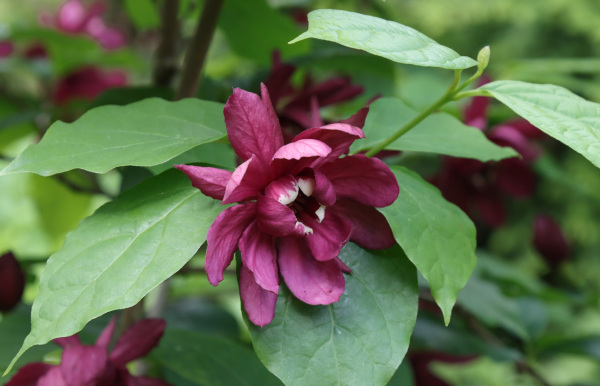
Key Information
Position
Soil Conditions
Hardiness

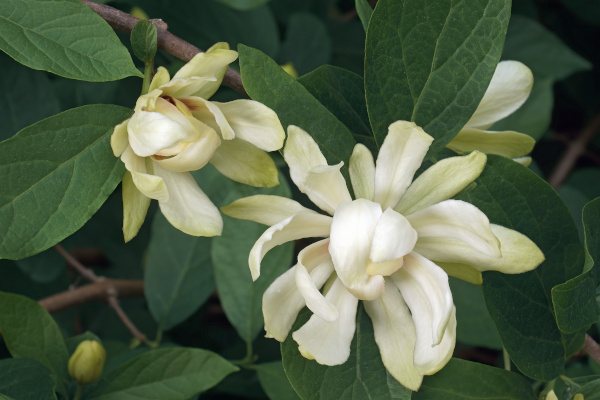
Where & when to plant Calycanthus
For best results, plant in autumn or spring. An autumn planting can be done by those gardening in mild conditions (and broadly speaking, this is the southern half of the UK). For those liable to very cold winters, it is best to wait until spring (generally the northern half of the UK). Planting can also be carried out in summer, though be prepared to water regularly.
This moisture-loving shrub is ideal for shrub borders or as a specimen in a mixed border. It also thrives on streambanks. Calycanthus has an eventual size and spread of 2-3m, though can be kept smaller with annual pruning. Avoid poor, dry soil.
Calycanthus can also be grown in a large container, providing it is given regular watering and feeding.
How to plant Calycanthus
In the ground
- Clear the chosen area of weeds.
- Dig a planting hole several times larger than the root ball. It is a good idea to mix in plenty of well-rotted organic matter at this stage.
- Place the plant in the hole, ensuring the top of the root ball sits level with the surface of the soil. Too low and the plant may rot, too high and the roots can dry out.
- Backfill with soil and firm in gently.
- Soak well with water.
- Mulch with well-rotted organic matter.
In a container
- Choose an appropriate container (the larger the better), ensuring there are plenty of drainage holes in the bottom.
- It can be a good idea to fill and plant large containers in situ to save yourself the trouble of moving once full.
- Use a good quality potting compost with plenty of horticultural grit mixed in, and, if not already present in the compost (check the description on the bag) some slow-release fertiliser granules.
- Start by partially filling the pot with compost; enough so that when placed on it the upper surface of the root ball is about 3cm lower than the top of the pot.
- Infill all the space surrounding the root ball with compost, firming down with your fingers then adding a little more so the plant is held tight.
- Pick up the pot (if you can!) and lightly tap on the ground a few times to help further settle the compost around the plant.
- Soak well with water.
- A mulch with horticultural grit will look attractive and help to prevent a ‘cap’ or crust forming on the top of the compost (something container plants can suffer due to the artificial nature of their watering).
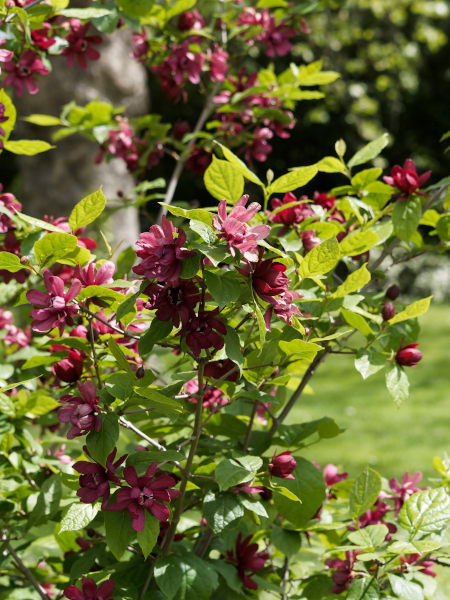
What to plant with Calycanthus
This unusual and attractive shrub mixes easily with a range of planting styles. For a real hit to the olfactory senses, create a shrub border with other fragrant delights such as syringa, philadelphus, and Lonicera fragrantissima (shrubby honeysuckle).
Alternatively make use of the capabilities calycanthus has as a waterside shrub, by using it to border a stream or pond. Combine with similarly inclined moisture-lovers such as sorbaria, Salix gracistyla ‘Mount Aso’, tamarix, and catalpa, for an attractive and varied mix.
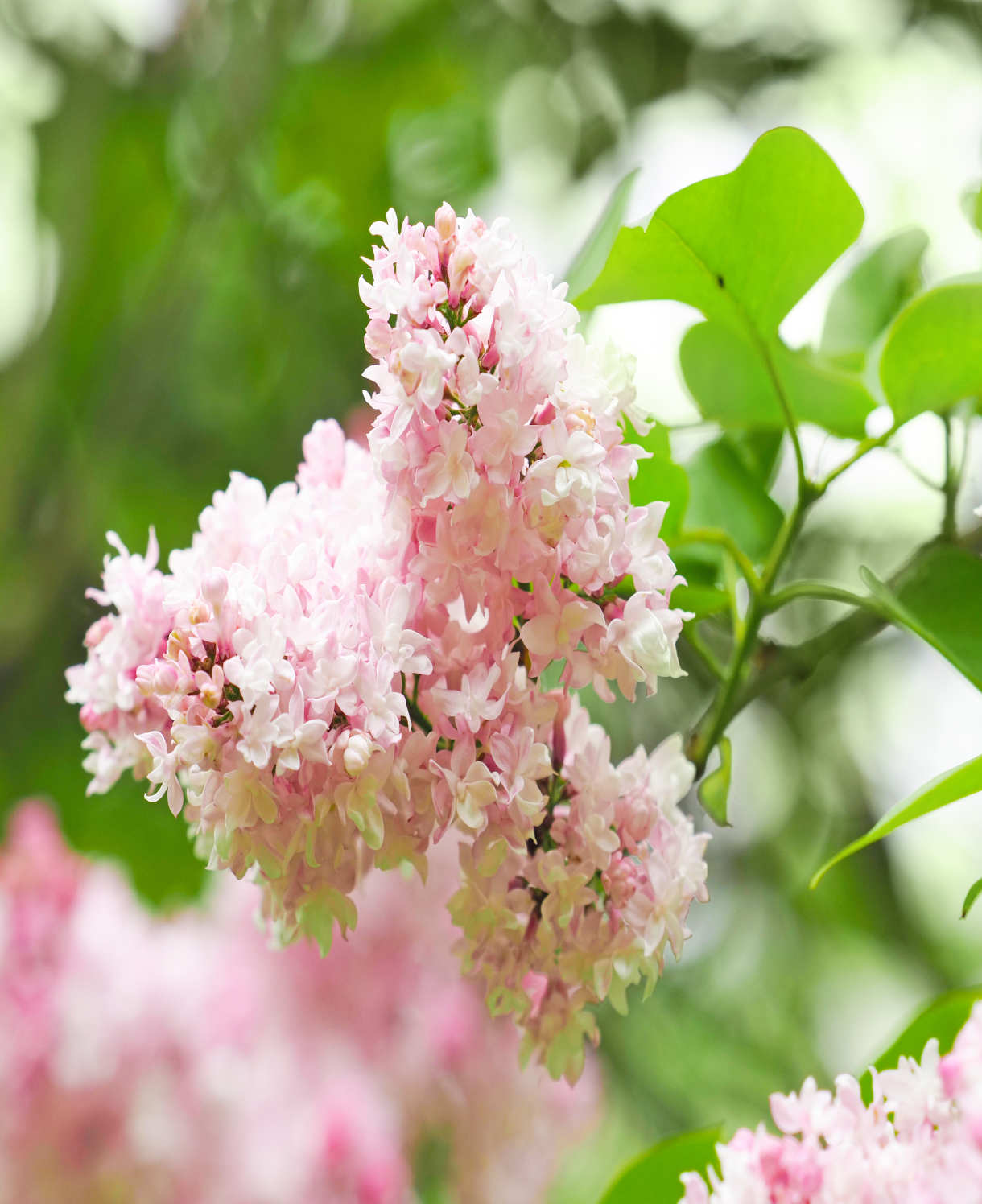
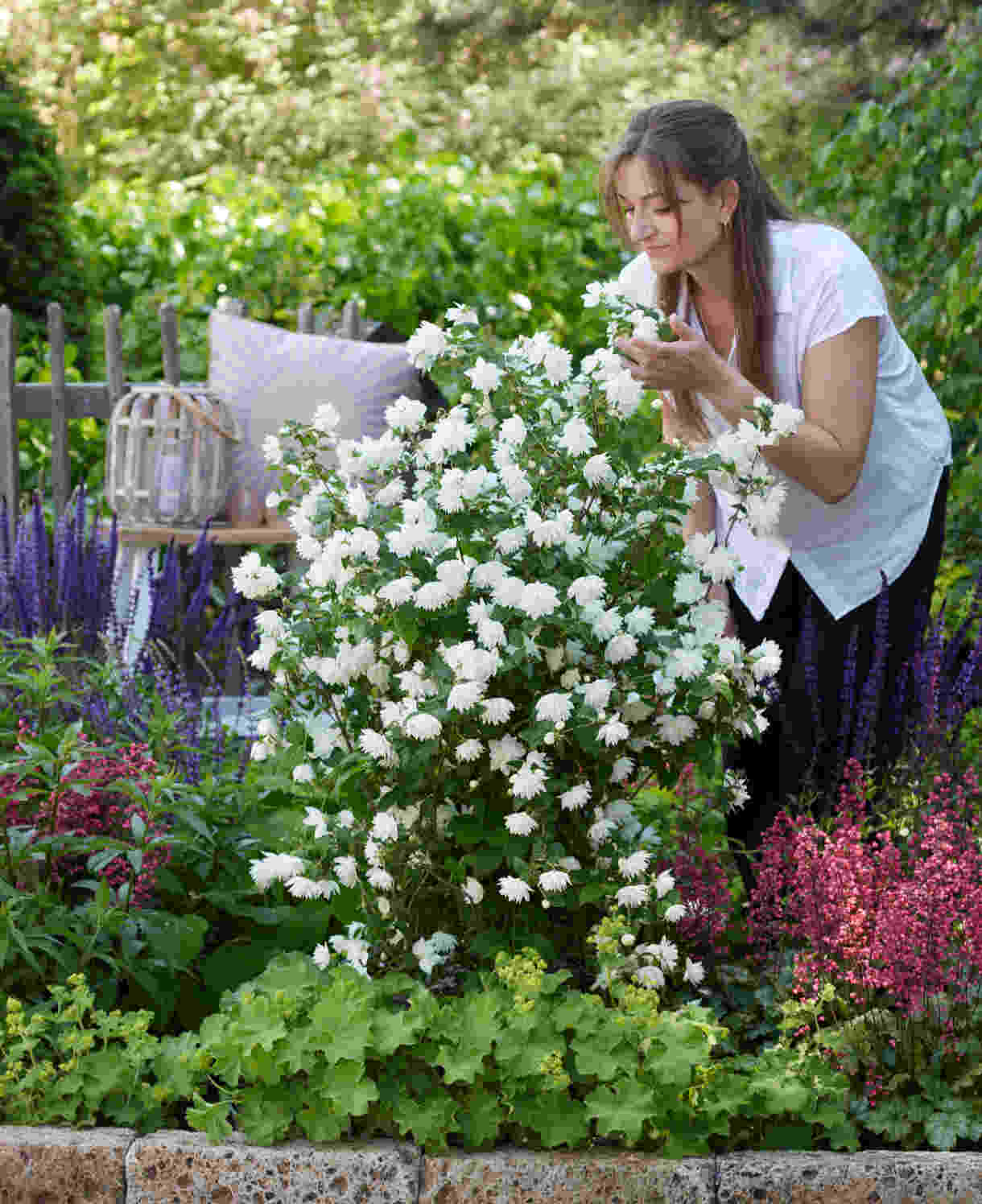

How to care for Calycanthus
Pruning and Deadheading
Remove dead, diseased, damaged, or crossing wood in early spring. In addition to this take back last year’s flowered stems to within one or two buds of the older woody framework. This will maintain a neat, compact shape.
You may find your calycanthus develops a suckering habit. If you do not wish it to spread in this way, simply remove any unwanted suckers in spring.
Watering
Water calycanthus until established, and then in dry spells thereafter. It is important to choose a reliably moist spot for this shrub, which does not like to go thirsty.
Container-grown calycanthus requires regular watering throughout the growing season. Allow the top few centimetres of compost to dry out between soakings.
Cold Protection
Calycanthus is hardy throughout most of the UK with no need for added protection.
Pests and Diseases
Calycanthus tends to be trouble-free.
How to propagate Calycanthus
Calycanthus cuttings can be tricky to root, so instead we recommend layering in spring or autumn. This is a simple and effective technique which involves pegging a wounded stem to the ground, to develop roots while still attached to the parent plant. It requires far less input than most other methods of propagation – largely leaving the plant to do the work.
- Choose a few flexible outer shoots that can easily be bent down to the surface of the soil.
- Make a 5cm long incision where the stem will touch the ground, ensuring you slice through a leaf bud.
- Insert a matchstick to wedge the incision open slightly.
- Dig a small, shallow trench where the shoot will touch the ground (adding a little grit if the soil is heavy).
- Peg the shoot into the trench using thick wire or a strong forked twig.
- Fill with soil, firm in, and water.
- Mark the spot with a cane. Roots can take 12 months to form, making it easy to forget what you have done and where...!
- When a good root system has formed, sever from the parent plant and either replant elsewhere or put in a pot for growing on.
Common Calycanthus questions
- How fast does calycanthus grow?
Calycanthus has an average rate of growth, taking around a decade to reach its eventual size. - Is calycanthus hardy?
Yes, all the calycanthus sold by Hayloft can withstand the average UK winter. Calycanthus x raulstonii is hardy to between -10ׄ°C and -15°C, while Calycanthus floridus is between -5°C and -10°C. - Does calycanthus survive frost?
Though it looks exotic, calycanthus will tolerate frost. See previous answer for hardiness details. If you live in a very cold area and are concerned about pushing your calycanthus to its limits, you may wish to consider using a fleece jacket for added protection. - Will calycanthus grow in shade?
In our climate calycanthus grows and flowers best in full sun, though will tolerate light, dappled shade. Full shade is not recommended.




